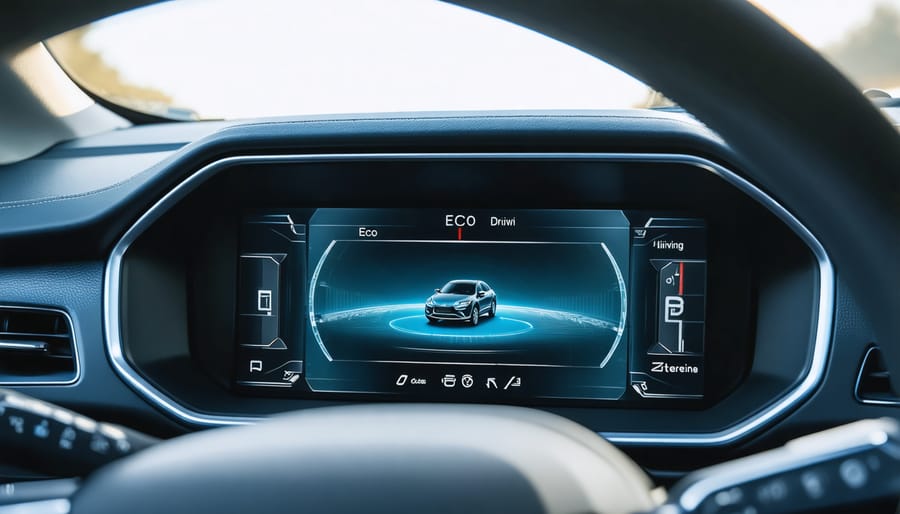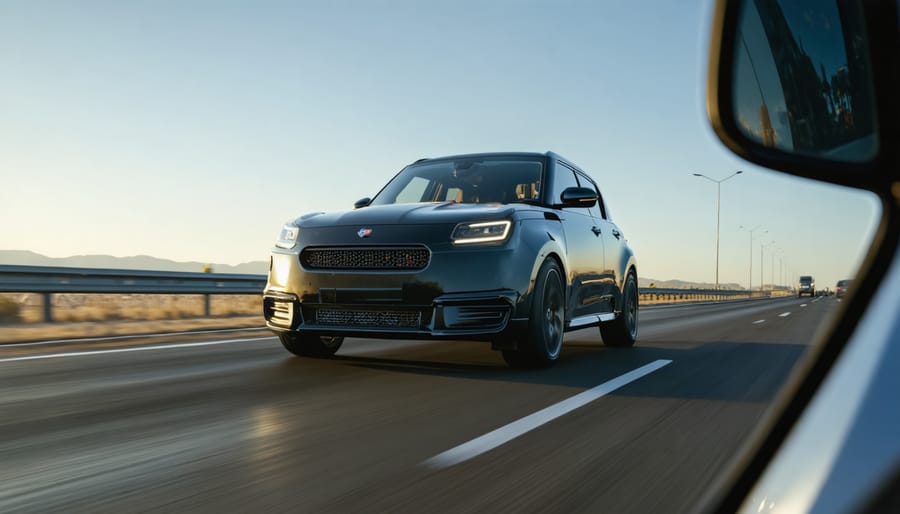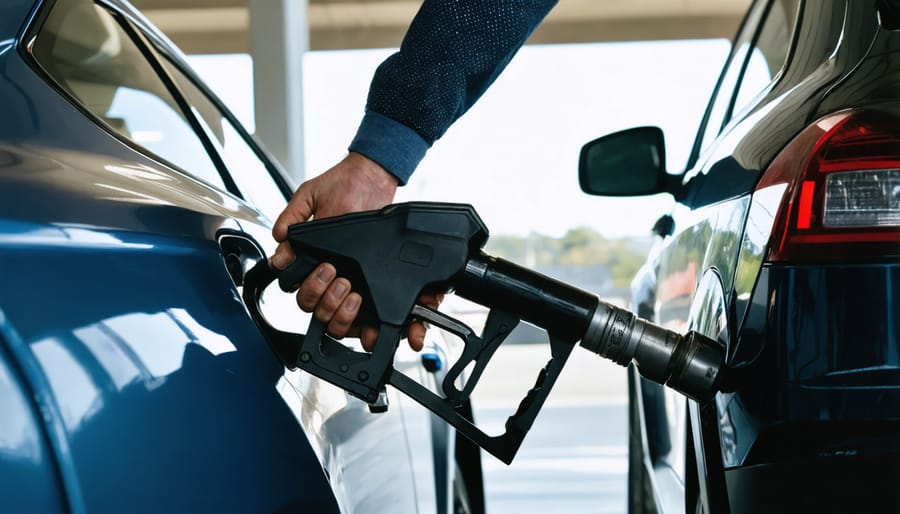Transform your daily drive into a fuel-saving journey with your vehicle’s eco driving indicator – the intelligent dashboard feature helping Australians reduce fuel consumption by up to 15%. As more drivers switch to energy efficient vehicles, understanding this small but powerful tool becomes essential for maximising fuel economy and reducing environmental impact. Your eco indicator serves as a real-time coach, displaying immediate feedback through colour-coded lights or digital displays to help you perfect your driving technique. Whether you’re navigating busy Sydney streets or cruising along the Great Ocean Road, this smart technology analyses acceleration, braking patterns, and engine efficiency to guide you toward optimal fuel-saving performance. By mastering your eco driving indicator’s signals, you’ll join thousands of environmentally conscious Australians already cutting fuel costs while contributing to a greener future.
Understanding Your Eco Driving Indicator

Common Display Types
Australian vehicles typically feature several types of eco driving indicators, each designed to help drivers monitor their fuel efficiency. The most common is the leaf or tree display, where green leaves appear or grow when driving efficiently, commonly found in Toyota and Lexus models across Australia. Many Holdens and European vehicles use a simple colour-coded bar that shifts from red to green based on driving efficiency.
Digital numerical displays are popular in newer models, showing real-time fuel consumption in litres per 100 kilometres, making it easy for drivers to track their efficiency. Some premium vehicles feature more sophisticated multi-function displays that combine various eco-metrics, including instant fuel economy, historical data, and driving style analysis.
Light commercial vehicles often use basic indicator lights that illuminate when driving efficiently, while hybrid vehicles typically include power flow diagrams showing energy distribution between the engine, battery, and wheels. Many modern Australian cars also feature eco-mode buttons that, when activated, display additional efficiency information and adjust vehicle performance for optimal fuel economy.
Reading Your Indicator
Most eco driving indicators use a simple colour-coded system that’s easy to understand at a glance. When you’re driving efficiently, you’ll typically see a green light or bar on your dashboard. This means you’re maintaining good fuel economy and minimising emissions – perfect for both your wallet and our environment.
If the indicator shifts to amber or yellow, it’s a gentle reminder that your driving style could be more efficient. This often happens during rapid acceleration or when maintaining higher speeds than necessary. Many Australian vehicles also display additional information like real-time fuel consumption rates or a scoring system to help you track your eco-driving progress.
Watch for blue or white indicators, which usually appear when you’re using more fuel than necessary. Some newer models feature leaf or tree symbols that “grow” as you drive more efficiently – a particularly engaging way to monitor your driving style. For the most accurate readings, check your indicator during consistent driving conditions, like on major highways between Sydney and Brisbane, rather than in stop-start city traffic.
Keep in mind that these indicators are guides rather than strict rules – they’re designed to help you develop more sustainable driving habits while considering Australian road conditions and driving requirements.
Maximising Your Eco Indicator’s Benefits
Acceleration Techniques
Making the most of your eco driving indicator starts with mastering efficient acceleration patterns. The key is to apply gentle, steady pressure to the accelerator while keeping an eye on your indicator’s feedback. In most Australian vehicles, the indicator will show green when you’re maintaining optimal acceleration, helping you perfect your energy efficient driving techniques.
Aim to accelerate smoothly from a stop, gradually building speed rather than pushing hard on the pedal. Watch for your indicator to maintain its green status – this typically happens when you’re increasing speed at a rate of about 2-3 kilometres per hour per second. Think of it like pouring a cup of tea: you want a steady, controlled flow rather than a sudden rush.
Many modern vehicles also display real-time fuel consumption data alongside the eco indicator. Use this information to find your vehicle’s sweet spot for acceleration. For most cars on Aussie roads, this means reaching your target speed within 15-20 seconds when accelerating from a complete stop.
If you notice the indicator changing colour or displaying warning symbols, ease off the accelerator slightly. This feedback helps you develop muscle memory for optimal acceleration, making eco-friendly driving second nature over time. Remember, smooth acceleration not only saves fuel but also reduces wear and tear on your vehicle.
Cruising and Braking
When it comes to eco-friendly driving on Australian roads, maintaining a steady cruising speed is your best mate for fuel efficiency. Think of it like surfing – catching a wave and riding it smoothly uses less energy than constantly paddling. The same goes for your vehicle; maintaining a consistent speed between 80-90 km/h on highways typically offers the sweet spot for fuel efficiency.
Your eco driving indicator will show its happiest readings when you avoid the stop-start pattern that’s common in city driving. On busy roads like Sydney’s Parramatta Road or Melbourne’s Hoddle Street, try to anticipate traffic flow and maintain a steady pace rather than accelerating and braking sharply.
Speaking of braking, gentle is the way to go. When you spot a red light ahead, ease off the accelerator early and let your car gradually slow down instead of braking hard at the last moment. This technique, known as progressive braking, not only keeps your eco indicator in the green but also reduces wear on your brake pads.
For city driving, leaving a three-second gap between you and the vehicle ahead gives you more time to react smoothly to changes in traffic flow. This spacing is particularly helpful during peak hours in urban centres, where your eco driving indicator can guide you toward more efficient braking patterns.
Remember, smooth and steady wins the race – and keeps your fuel consumption down.

Real Fuel Savings
Recent Australian studies have demonstrated impressive fuel savings through eco-driving practices, with the eco driving indicator playing a crucial role in achieving these results. A 2022 fleet study conducted in Melbourne showed that drivers actively using their eco indicators achieved average fuel savings of 12-15% compared to their previous consumption patterns.
In Queensland, a corporate fleet of 50 vehicles implemented an eco-driving program, focusing on indicator feedback. Over six months, they recorded an average reduction in fuel consumption of 1.2 litres per 100 kilometres, translating to approximately $600 in savings per vehicle annually.
The Western Australian Department of Transport’s sustainable driving initiative revealed that drivers who regularly consulted their eco indicators reduced their carbon emissions by up to 1.5 tonnes per year while saving an average of $850 on fuel costs.
A particularly noteworthy case comes from a Sydney-based delivery company, where 200 drivers underwent eco-driving training focused on understanding and responding to their vehicles’ eco indicators. The results were remarkable: a 17% reduction in fuel consumption across the fleet, equivalent to saving over 100,000 litres of fuel in just one year.
Small business owners in regional areas have reported similar success stories. A Bendigo-based florist reduced their delivery van’s fuel consumption by 14% after three months of conscious eco-indicator monitoring, while a Newcastle courier service cut their fuel costs by nearly 20% through consistent eco-driving practices.
These real-world examples demonstrate that understanding and responding to your eco driving indicator isn’t just about environmental responsibility – it’s about significant cost savings that benefit both individual drivers and businesses across Australia.

Common Misconceptions
Let’s clear up some common misunderstandings about eco driving indicators that many Aussie drivers share. First, many believe that the indicator is just another fancy dashboard light without real value. In reality, it’s a sophisticated tool that provides real-time feedback on your driving efficiency, helping you reduce both fuel consumption and emissions.
Another widespread myth is that following the eco indicator means driving frustratingly slowly. This isn’t true – eco driving is about smooth, anticipatory driving rather than crawling along. Many drivers successfully maintain normal speeds while keeping their eco indicators happy through smart acceleration and braking techniques.
Some motorists think eco indicators are only relevant for hybrid or electric vehicles. Actually, these systems benefit all modern vehicles and can help any driver reduce their environmental impact, regardless of their car type. While exploring sustainable transport options is important, making your necessary car journeys more efficient is equally valuable.
There’s also a misconception that eco indicators are unreliable because they show different readings for the same route. This variation is normal and reflects changing conditions like traffic, weather, and cargo weight – all factors that genuinely affect fuel efficiency.
Lastly, some believe that eco driving means compromising on vehicle performance or safety. In fact, the smooth driving style promoted by eco indicators often leads to safer driving practices and can help maintain your vehicle’s mechanical health over time.
Embracing eco-driving practices and understanding your vehicle’s eco indicator is more than just following a light on your dashboard – it’s about contributing to a more sustainable Australia. By monitoring your eco driving indicator and implementing the techniques we’ve discussed, you can reduce your fuel consumption by up to 25% while lowering your carbon footprint and saving money at the bowser.
Remember that every small action counts. Whether you’re commuting through busy Sydney streets or traversing the outback, smooth acceleration, maintaining steady speeds, and responding to your eco indicator’s feedback can make a significant difference. These habits not only benefit our environment but also extend the life of your vehicle and improve your driving experience.
As more Australians join the eco-driving movement, we’re creating a positive ripple effect across our communities. Start today by paying attention to your eco driving indicator, adjusting your driving style, and sharing these practices with others. Together, we can make our roads more efficient, our air cleaner, and our future brighter. Your eco driving indicator isn’t just a tool – it’s your partner in sustainable driving.
